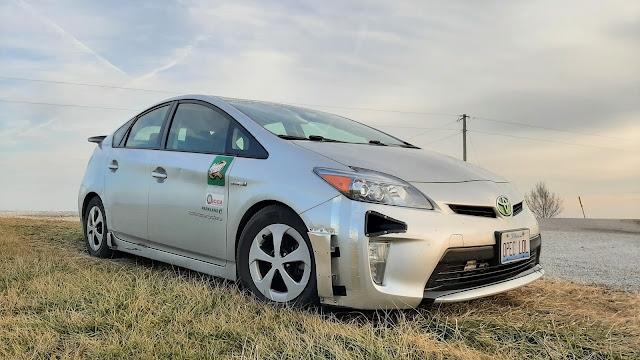Aerodynamic Modification Doesn't Have to be Expensive or Complicated
Reading
through a Youtube post recently on the perceived roadblocks to
aerodynamic modification, I was disheartened to see many commenters espouse the
idea that effective mods require huge expenditures of money and time, lots of trial
and error, or won’t be effective at (legal) road speeds and therefore aren’t
worth doing. These attitudes couldn’t be more wrong: aerodynamic modification
of road cars can be done very simply and cheaply, and the results can be
dramatic.
Myth:
To effectively modify your car’s aerodynamics requires a powerful computer and
CFD or thousands of dollars’ worth of wind tunnel time.
Reality:
CFD and wind tunnels
are the two test environments most amateurs are somewhat familiar with and put
a lot of faith in. However, there are huge problems with both of these, as I’ve
intimated before in several posts.
CFD, or computational
fluid dynamics, uses mathematics to model airflows. This can be a very useful
tool in the initial development phase of a new car design, for example, since
it requires only a digital model of the vehicle rather than a physical mockup
or test buck. Lots of iterations can be tested in relatively short time to
decide on the best designs for further development.
However (and that’s a huge “however”), CFD
is not a 100% accurate simulation of real airflows. In order to reduce the equations
of fluid motion to something solvable by a computer in a reasonable amount of
time, significant simplifying assumptions have to be made. In low-speed
aerodynamics (such as automotive), these assumptions reduce the number of
variables from 7 to 4: pressure and three components of velocity. Temperature,
density, and viscosity are assumed constant. In reality, these vary. And while
they may not vary much, by assuming any change in these variables is negligible,
this removes CFD simulations a step back from reality. The way computers solve the coupled partial differential equations that describe moving fluids necessitates approximation, as no analytical solutions exist. Instead, these equations are solved numerically or iteratively, by discretizing the spatial domain and sometimes the time domain as well. Over these processes, errors can propagate in a number of ways.






Hello, your contact page seems to be bugging out as the "sending..." Just sits in loop. Would you mind fixing this please? I have some questions, thank you.
ReplyDelete